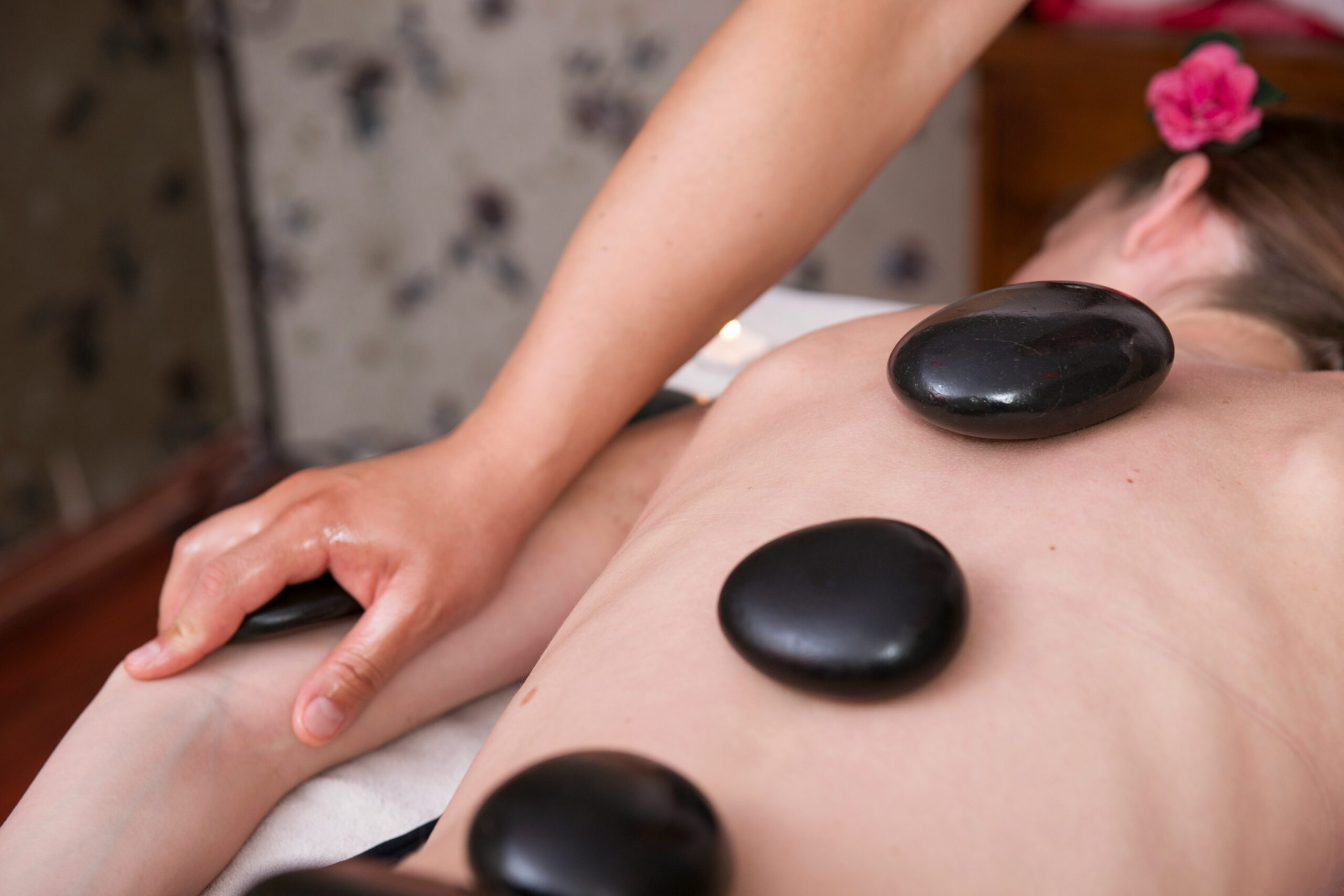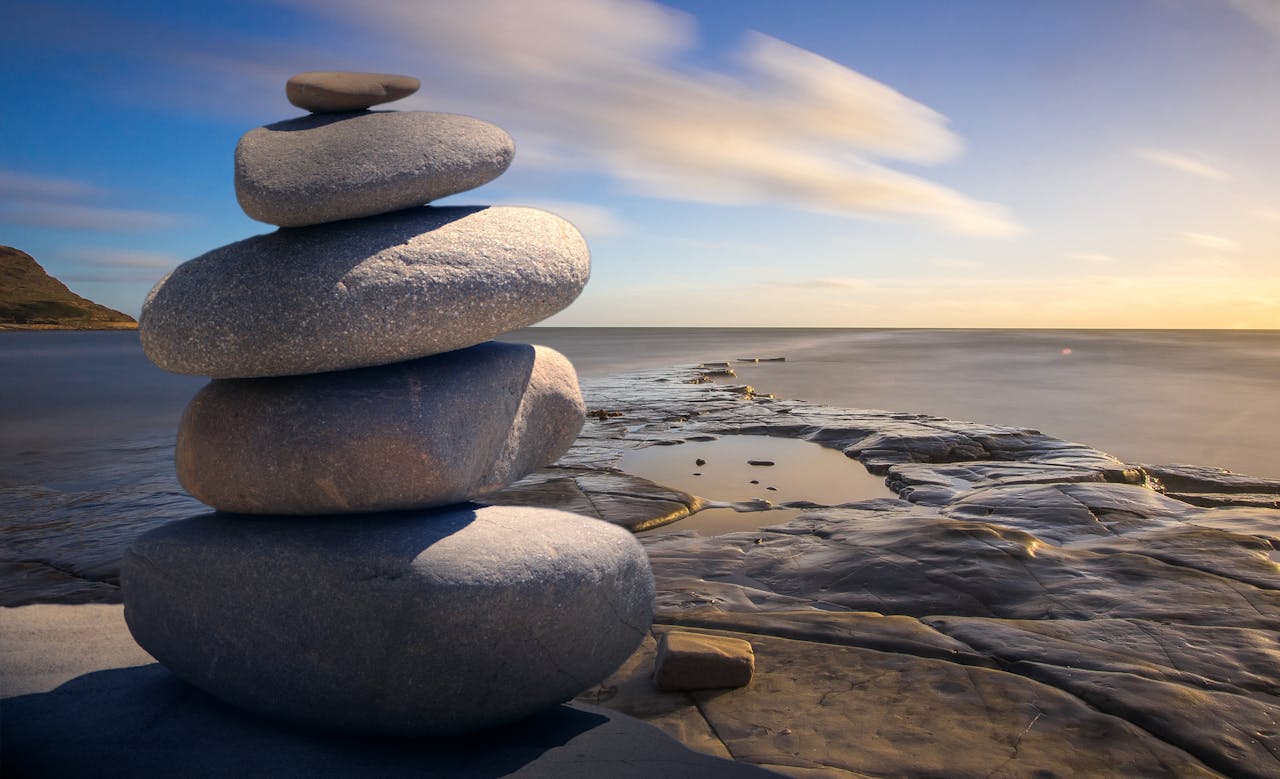Introduction to Asian Massage
Asian massage encompasses a diverse range of therapeutic practices rooted in the traditions and philosophies of Asian cultures. These methods manifest not only as physical treatments but also as holistic approaches aimed at balancing the body, mind, and spirit. Historical roots can be traced back thousands of years, with differing styles offering unique benefits and cultural significance.
One of the most recognized forms of Asian massage is Thai massage, which emphasizes stretching and deep muscle work. This technique integrates yoga-like postures, rhythmic compression, and acupressure to promote relaxation and flexibility. Practitioners often utilize their hands, feet, elbows, and knees, creating a dynamic, flowing experience that rejuvenates both the body and energy channels.
Shiatsu, originating from Japan, is another prominent style of Asian massage. It is based on the principles of Traditional Chinese Medicine, focusing on the body’s meridian system. By applying pressure at specific points, shiatsu aims to stimulate energy flow (Qi) and alleviate various ailments. This approach emphasizes mindfulness and the therapist-client connection, fostering an environment of trust and relaxation.
Tui Na is a Chinese therapeutic massage technique that combines acupressure, rhythmic compression, and stretches. It often addresses specific health issues and is used in conjunction with other treatments like acupuncture. Tui Na emphasizes the movement of Qi through the body and helps restore the natural balance between yin and yang, promoting overall wellness.
As we delve deeper into the intricacies of these various forms of Asian massage, their historical context and cultural importance will be further explored, enriching our understanding of the profound impact they have on both physical and mental health.
Common Types of Asian Massage Techniques
Asian massage techniques encompass a variety of practices, each with unique approaches and benefits that draw from rich cultural traditions. One prominent technique is Thai massage, which integrates gentle rocking, deep stretching, and acupressure. This form promotes relaxation while improving flexibility and circulation. Practitioners often position clients on a mat instead of a massage table, allowing for a more dynamic and engaging experience. The rhythmic nature of Thai massage stimulates the body’s energy lines, known as “Sen,” promoting balance and harmony.
Shiatsu, a Japanese form of massage rooted in Traditional Chinese Medicine, focuses on the body’s meridians and pressure points. Practitioners use their fingers, palms, and occasionally elbows to apply pressure to specific areas of the body. This technique aims to enhance overall well-being and alleviate pain by promoting the smooth flow of energy, or “Qi.” Shiatsu is characterized by its gentle yet firm touch, which can help relieve tension and increase relaxation, ultimately fostering a sense of calm and rejuvenation.
Acupressure is another key technique often found in Asian massage practices. Similar to acupuncture, it employs finger pressure on specific points along the body’s energy pathways, yet it does not require needles. By stimulating these points, acupressure seeks to restore balance among the body’s internal organs and systems. This technique can be particularly beneficial in alleviating stress, reducing anxiety, and managing chronic pain. Overall, learning about these different types of Asian massage can significantly enhance an individual’s massage experience, providing valuable insights into what one can anticipate during a session.
Preparing for Your Asian Massage
Preparing for an Asian massage can significantly enhance the overall experience, making it more enjoyable and beneficial. One of the first considerations is attire. It is advisable to wear loose, comfortable clothing made from breathable materials. Many spas provide robes or comfortable garments specifically designed for massages, which ensure ease of movement and relaxation during the session. Wearing the right clothing allows the therapist to access various areas of the body more effectively, which is particularly important during techniques that require unhindered flow.
Communication plays a vital role in ensuring a fulfilling massage experience. Before the session begins, it is recommended to speak openly with the therapist about any specific areas of tension, pain, or discomfort. Discuss your previous experiences with Asian massage, if any, to help the therapist tailor their approach to your preferences. Clearly expressing your expectations regarding the pressure, techniques, and focus areas can lead to a more satisfying session. It may also be beneficial to inquire about the types of Asian massage offered, as various styles—such as Shiatsu, Thai, or Tui Na—each have unique methodologies and benefits.
Additionally, clients should feel empowered to ask questions prior to the start of the session. Inquiring about the therapist’s qualifications, experience, and the techniques they specialize in can provide reassurance and foster trust. Understanding the oil or lotions that might be used and confirming any preferences, such as unscented options for those with sensitivities, can also be useful. Lastly, considering the serenity of the environment is essential. Arriving early to relax and acclimate to the surroundings can help in achieving a state of calm that is conducive to receiving the full benefits of your Asian massage.
What to Expect During an Asian Massage Session
When you enter an establishment specializing in Asian massage, the ambiance is often calming and serene. Dim lighting, soft music, and the subtle scent of essential oils contribute to a tranquil environment, conducive to relaxation. Upon arrival, you may be greeted by a therapist who will guide you to a private room where the session will take place. It is common for the therapist to inquire about any specific areas of concern or tension, allowing them to tailor the massage to your needs.
During the session, a variety of techniques may be employed, depending on the specific modality of Asian massage you are experiencing. Techniques such as Shiatsu, Thai, or Tui Na leverage acupressure, stretching, and rhythmic movements to alleviate tension and promote relaxation. Each method has its unique characteristics; for instance, Thai massage incorporates assisted yoga-like stretches, while Shiatsu focuses more on the application of pressure along meridian lines in the body. Throughout the massage, your therapist will maintain a consistent dialogue regarding your comfort levels, ensuring that the pressure applied aligns with your preferences.
As the session progresses, you may find yourself entering a deep state of relaxation, allowing your mind to clear and your body to let go of tension. The use of natural oils or balms may also be integrated to enhance the experience, adding a nourishing aspect to the treatment. Towards the end of the session, the therapist may perform gentle movements or stretches to promote a sense of rejuvenation. After the massage, it is common for practitioners to offer warm tea, providing a moment to transition back to the outside world. Overall, an Asian massage session is designed to be a holistic experience that leaves you feeling balanced and revitalized.
Benefits of Asian Massage
Asian massage encompasses a range of techniques rooted in traditions such as Chinese, Thai, and Japanese practices. Each method offers unique benefits, focusing on the holistic connection between the body, mind, and spirit. One prominent benefit of these soothing therapies is stress relief. Life can be filled with overwhelming demands, and Asian massage techniques are tailored to ease tension built up from daily stressors. By utilizing specific pressure points and gentle manipulation, these massages induce a state of relaxation that can alleviate anxiety and promote mental clarity.
Another significant advantage of Asian massage lies in its ability to improve flexibility and mobility. Techniques such as Thai massage involve stretching and rhythmic compression, effectively opening tight muscles and allowing for a greater range of motion. Regular sessions can enhance overall physical performance and significantly reduce the likelihood of injury. Furthermore, these practices target specific acupressure points, which not only helps in improving flexibility but also optimizes the flow of energy (Qi) within the body, contributing to a more balanced physical state.
Promoting relaxation is a core component of Asian massage, as the various techniques encourage deep breathing and mindfulness. This focus on relaxation can lead to better sleep patterns, improved concentration, and an overall sense of well-being. Additionally, the emotional benefits derived from Asian massage cannot be overlooked; it provides a space for introspection and rejuvenation. Those seeking a break from their hectic lives may find solace in the therapeutic environment that such massages create, fostering emotional healing through improved body awareness and mental peace.
Overall, the benefits of Asian massage extend far beyond mere pampering. They are integral to enhancing physical health, mental clarity, and emotional stability, resulting in a holistic approach to well-being that many individuals find invaluable.
Addressing Common Myths and Misconceptions
The realm of Asian massage, encompassing various traditional practices such as Thai, Shiatsu, and Tui Na, often faces several myths and misconceptions that can cloud public perception. These inaccuracies can misrepresent the therapeutic benefits offered by these time-honored techniques, so it is essential to differentiate between fact and fiction.
One prevalent misconception is that Asian massage exclusively focuses on relaxation and pleasure. While many individuals seek these treatments for stress relief, the core of Asian massage emphasizes holistic healing. Practitioners often integrate physical manipulation, stretching, and acupressure points to address specific ailments or discomforts. Consequently, Asian massage can be more therapeutic than many people realize, targeting chronic pain or tension rather than merely providing a soothing experience.
Another myth relates to cultural stereotypes that often accompany Asian massage practices. The misconception that these therapies might have an undercurrent of sensuality is misleading and stems from a misunderstanding of cultural norms and practices. In reality, professional Asian massage is rooted in centuries of tradition and is administered by trained practitioners who adhere to strict ethical guidelines. As such, these practitioners focus on delivering a professional therapeutic experience rather than providing any inappropriate services.
Furthermore, there is a belief that all Asian massages are the same or interchangeable. In truth, each style is unique and adapted to different needs and objectives. For instance, Thai massage incorporates yoga-like stretches, while Shiatsu focuses on applying pressure to specific points along the body’s energy pathways. Understanding these differences aids in appreciating the diversity and depth of Asian massage practices, ensuring that individuals can select the appropriate method for their specific needs.
Ultimately, by addressing these misconceptions and clearer understandings of Asian massage, individuals can approach their experiences with a well-informed perspective and an appreciation for the therapeutic benefits these time-honored practices offer.
Aftercare Tips Following Your Massage
Following an asian massage, the aftercare you undertake plays a significant role in prolonging the benefits you experienced during your session. First and foremost, it is essential to prioritize hydration. The massage process aids in the release of toxins from the muscles and promotes blood circulation. To assist your body in flushing these toxins out, drink plenty of water throughout the day. This not only helps in rehydrating your body but also enhances overall wellness, ensuring you feel rejuvenated.
Equally important is the necessity for rest. After an asian massage, your body may feel relaxed, and allowing yourself some time to unwind is crucial. Whether it entails taking a nap, reading a book, or engaging in light activities, ensure your post-massage time allows your body to recover and adjust to the relaxation achieved during the treatment. This conscious habit of rest can significantly amplify the effects of the massage, aiding in both physical recovery and mental relaxation.
In addition to hydration and rest, incorporating gentle stretches into your post-massage routine can help maintain flexibility and relieve any residual tension. Focus on areas that received more attention during the asian massage, gently easing into movements that promote stretching. This approach not only continues the relaxation process but also supports your body’s recovery by keeping the muscles pliable and less likely to become tense again.
Paying attention to these aftercare tips is essential to maximize the benefits of your asian massage experience. A combination of proper hydration, adequate rest, and gentle stretching will ensure you feel relaxed and rejuvenated long after your treatment has concluded.
Finding a Reputable Asian Massage Practitioner
When seeking a qualified Asian massage practitioner, it is essential to conduct thorough research to ensure you receive the best care possible. One key aspect to consider is the practitioner’s credentials. Verify that the therapist has received formal training in Asian massage techniques, whether it be traditional Chinese massage, Thai massage, or other forms. Check their certifications and licenses, as these credentials reflect their expertise and adherence to industry standards.
Another important step is to read client reviews and testimonials. Online platforms and social media can provide valuable insights into the experiences of others. Look for practitioners with a strong reputation and positive feedback regarding their services. Pay attention to comments about their professionalism, atmosphere, and the effectiveness of their techniques. This will help you gauge the quality of the massage experience you can expect.
In addition to credentials and reviews, consider what to look for in an ideal massage therapist. A good practitioner should have excellent communication skills, allowing them to engage with clients and understand their specific needs and preferences. This dialogue is crucial for personalizing the Asian massage experience and ensuring comfort throughout the session. Furthermore, observe the establishment’s environment; a clean, welcoming, and peaceful atmosphere can greatly enhance your overall experience.
Finally, consult with friends or family for recommendations. Personal referrals can lead to discovering trustworthy practitioners who have already proven their skills in Asian massage. By taking these steps and remaining diligent, you can find a reputable massage therapist that meets your needs and provides a satisfying, therapeutic experience.
Conclusion: Embracing the Asian Massage Experience
Throughout this exploration of the Asian massage experience, we have highlighted the numerous therapeutic benefits associated with this practice. From relaxation to pain relief, Asian massage techniques harness the power of tradition and holistic healing. By understanding the various modalities, such as Shiatsu, Thai massage, and Tui Na, individuals can appreciate the complexity and depth of care that these ancient practices offer.
Asian massage is not merely a luxury; it is an essential component of self-care that nurtures both physical and mental well-being. As our lives become increasingly busy and stressful, taking the time to engage in an Asian massage can serve as a rejuvenating escape, promoting relaxation and harmony within the body. Furthermore, the tailored approaches inherent in these techniques allow practitioners to address specific concerns for each individual whether it be muscle tension, stress management, or a simple desire for tranquility.
For anyone considering an opportunity to experience Asian massage, it is worth remembering that this practice is designed to meet diverse needs and preferences. It welcomes individuals from all walks of life, making it an inclusive pathway to better health. As you prepare to enhance your wellness journey, allow curiosity to guide you towards scheduling a session. Engaging with an experienced practitioner will not only unlock the therapeutic potential of Asian massage but also provide a unique experience that can enrich your self-care rituals.
In conclusion, embracing the Asian massage experience can significantly contribute to your overall well-being. By incorporating this practice into your routine, you pave the way for a more balanced and rejuvenated lifestyle. So take the first step, prioritize yourself, and immerse yourself in the restorative power of Asian massage.

We share information about current trends and stories of people all around the world.

